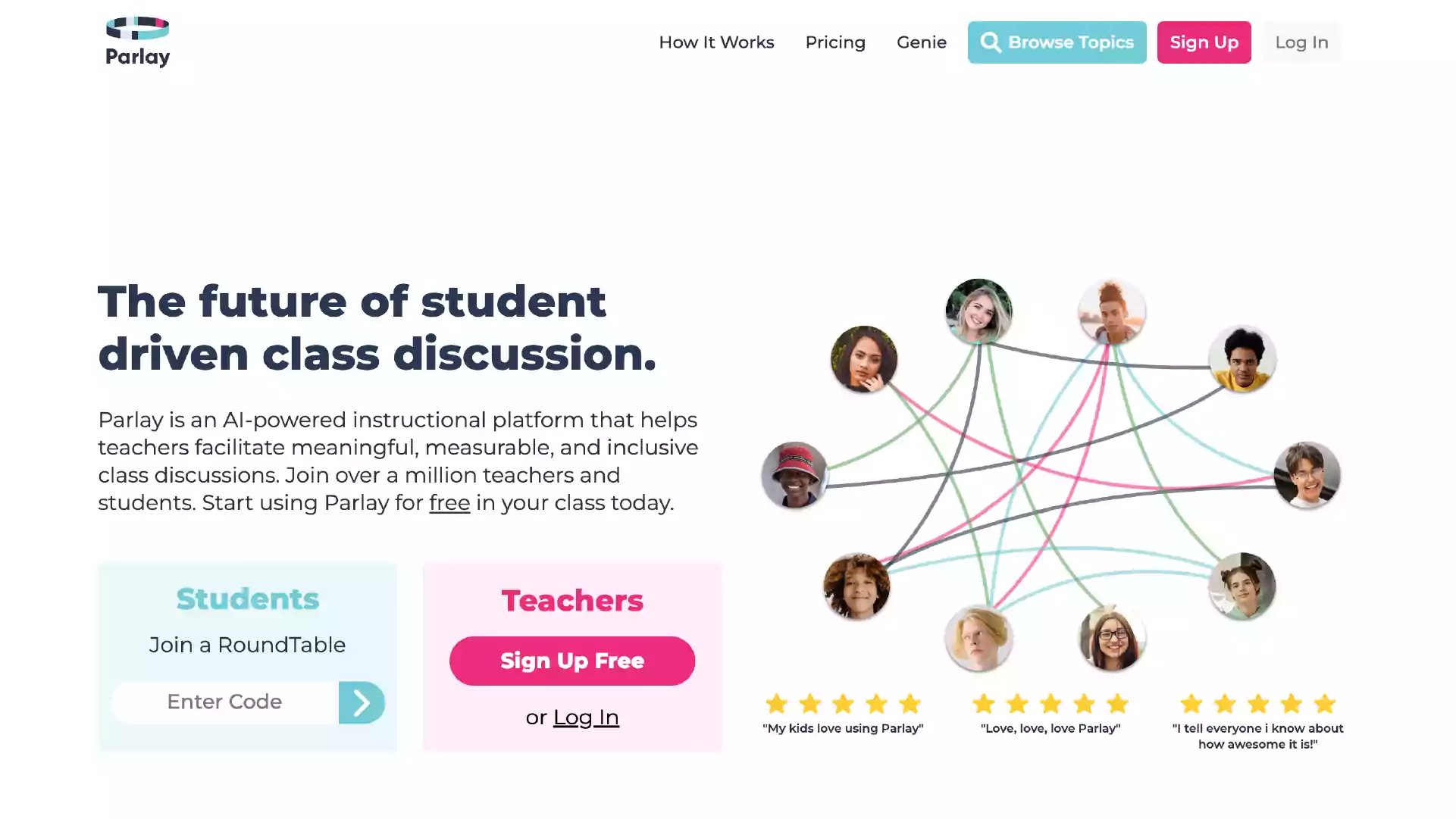Last month, I sat down with Jamie Engel, the CEO and Founder of Neutopia. We connected on LinkedIn...
Facilitating discussions in online courses
Benefits of facilitating discussions in online courses
Learners in online courses—whether they be undergraduate, post-graduate, continuous professional development or vocational—have a wealth of experience to share, and facilitating discussions in online courses unlocks great value. Learning from peers is one of the key reasons professionals undertake continuing education. Discussions forums can encourage active and social learning, giving learners agency and a space of their own within the online learning environment. Quality curation of online discussions reduces reliance on ‘teacher as source of knowledge’ and brings to light the value of individual experiences. As discussed in a recent article by Champion and Gunnlaugson, appropriately facilitating discussions can unlock the transformative potential of online conversations.
| READ | Champion, K. & Gunnlaugson, O. (2018). Fostering generative conversation in higher education course discussion boards, Innovations in Education and Teaching International, 55:6, 704-712 DOI: 10.1080/14703297.2017.1279069 |
… participant-driven discussion boards … could grow to play an important role in supporting emergent forms of learning in the twenty-first century, helping instructors and learners further engage the transformative potential of online conversations.
Champion and Gunnlaugson, 2018
When to use discussion forums
Discussions are a vital way to tap into the rich and diverse experience of individuals in the group and personalise the learning. Discussion about a case study or topic could include questions such as, “Do you have a similar experience to share? What have you learned from this experience?” This is a technique that helps embed knowledge.
Discussions can also be very effective when your goal is to stimulate engagement and interaction between students after a certain task or activity, such as reading an article or watching a video. If you have a large class it is best to separate students into groups of six to eight. Allocating students into smaller groups increases their accountability and smaller groups make it harder for students to “lurk” online.
Discussions can also be used as a tool for community building when networking and professional development are vital to your course. Facilitating discussions by encouraging students to share relevant professional development opportunities, articles and upcoming industry events can lead to learning outside the classroom and digital environment.
Lastly, discussions are extremely useful in a large course for you as an instructor, particularly if your email inbox is flooded with similar questions from students. You might work a typical 9-5 day; however students are online 24/7. Rather than arriving the next day to a full inbox, encourage students to post questions to a discussion board. Chances are, they will problem-solve among themselves. This becomes an effective form of social learning. To encourage this further, try not to reply to a question straight away—wait to see if a student will chime in. Discussions can also replace announcements if you are aiming to broadcast information or messages to your entire student group.

Facilitating discussions: How to facilitate great discussions online
Seek to understand your students
It is important to encourage students to be actively engaged with the online discussions. In any group, there are typically 3 patterns of behaviours in online discussion groups:
- Starters: those who create posts and stimulate discussion.
- Responders: those who prefer to only respond.
- Lurkers: those who are viewing the discussions but not contributing.
Ask good questions
The way you prompt or frame the discussion is key. Discussion questions should closely align with course concepts and objectives. When developing prompts for an online forum:
- frame the question as open-ended. Begin questions with how, what or why;
- create questions that will elicit more than one answer or solution;
- ask students to provide support for their response with examples/references, e.g. personal experience, course materials or outside sources;
- create questions that encourage students to voice their opinion, perspective or personal experience;
- make specific reference to theories, diagrams, authors, and/or page numbers;
- use words such as ‘describe’ or ‘explain’ to elicit deeper responses;
- review and consider the course/module objectives—ask, ‘does this discussion question support the course/module objective or focus?’ Students dislike busy work— discussion questions without a focus and purpose lead to shallow responses.1

Encourage engagement
As the person facilitating discussions, you need to model and monitor engagement. You can support engagement by encouraging students to be:
- Courageous: not be afraid to contribute and put forward ideas.
- Curious: respect that every student has their own unique experience and discussions are an opportunity to view other perspectives.
- Constructive: ensure proper ‘netiquette’ is followed and ideas are debated in a civilised manner.
We suggested above that discussions are more effective after an activity or task. This only works if your discussion prompt is not designed to simply confirm that students read/watched and understood/comprehended the content. A quiz would be better for that. As an instructor, when creating discussion prompts, consider using action verbs such as ‘compare’ and ‘investigate’ to encourage students to undertake further research and to report back on their findings. Here you are using Bloom’s taxonomy to help in your selection of prompts, engaging learners at different cognitive levels. Asking students to ‘define’ something, for example, allows them to demonstrate basic recall, while ‘compare’ taps into analytical thinking, and ‘investigate’ accesses even higher order creativity.
Incorporating storytelling elements into your discussion prompts can also lead to better engagement. Consider starting your prompts with “What if …” and “Imagine you were …”. This will lead to unique posts from students rather than one correct answer and then everyone agreeing. The snowball technique can also be effective by encouraging students to limit their response to one line. The next student to comment must add to the previous line, and so on.
Activity
Now that we have explored some techniques for creating engaging discussion posts, have a go at applying them.
- Take an existing discussion prompt you might be planning on using and see how you can reframe it to ensure it won’t just produce one standard response. See if you can apply the snowball or jigsaw technique to the prompt.
- Take an existing discussion prompt you might be planning on using, and instead reframe it around requiring students to post a meme or gif. Being able to summarise something in enough space to fit in a meme is actually evidence of deep understanding and to create humor shows interpretation and comprehension skills.
Tool
Check out Parlay. Parlay is an innovative discussion platform that allows learners to interact using RoundTables. The content within the RoundTable can be multimedia or text-based, and once a RoundTable has been assigned to a group they can review and respond to prompts and engage in peer feedback via comments both in synchronous and asynchronous lessons. It has an assessment tool that allows you to easily track and score participation in the discussion and you can see analytics on both quantity and quality of learner participation. You can also add rubrics for yourself and the learners to use when giving feedback.

Summary
Facilitating discussions can support generative conversations, build community and form part of group work and assignments. They can be set up to look like popular social media platforms or a simple FAQ page. However if you really want to instill a culture of social learning into your course design, discussions must be used effectively. Participation is greater when collaboration and problem solving are present and quality facilitation is key.
Further information
- The Australian Government Department of Education and Training recently commissioned a resource for higher education providers on best practice application of online discussion forums: Verenikina, I., Jones, P. T. & Delahunty, J. (2017). The Guide to Fostering Asynchronous Online Discussion in Higher Education. Accessed November 20, 2020.
- Lieberman, M. (2019). Discussion Boards: Valuable? Overused? Discuss. [Blog]. Accessed February 13, 2021.





